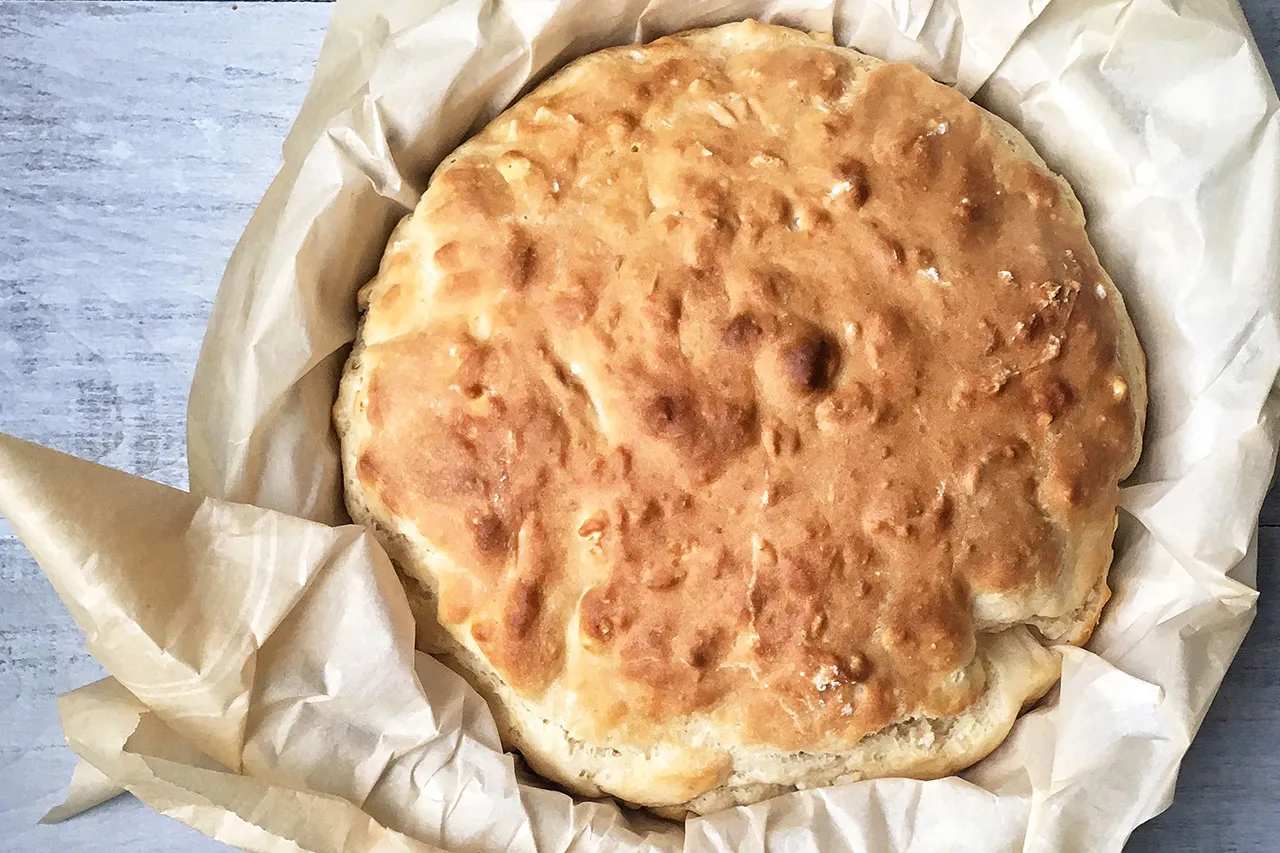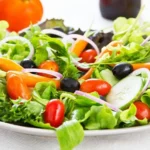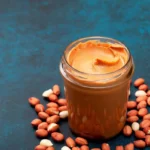
Bannock is a traditional bread with deep roots in Indigenous cultures, particularly in Canada. Known for its versatility and rich history, Bannock has become a symbol of community and cultural sharing. This simple yet nourishing food has found its way into contemporary cuisine, while also maintaining its significance in social gatherings and literary expressions. From its nutritional value to its adaptations for modern diets, Bannock continues to be celebrated for its role in fostering connections and preserving culinary heritage.
Origin: Bannock has its roots in Scottish cuisine, specifically from a type of flatbread that dates back to the 18th century. Scottish settlers brought this bread to North America, where it was adapted by Indigenous peoples. The name “bannock” itself is derived from the Scottish Gaelic word “bannachan,” which refers to a type of bread. This cross-cultural exchange led to the evolution of Bannock into various forms that reflect the ingredients and cooking methods available in different regions of North America.
Indigenous Adaptation: Indigenous peoples across North America embraced Bannock, adapting the original Scottish recipe to incorporate local ingredients such as wild game, berries, and different types of flour. This adaptation allowed Bannock to become a versatile food that could be made in various ways, often using simple ingredients that were readily available. Bannock became a staple among Indigenous communities, serving not only as a source of sustenance but also as a means of cultural expression and connection to tradition.
Cooking Methods: One of the remarkable features of Bannock is its versatility in cooking methods. It can be baked in an oven, fried in a pan, or cooked over an open fire, making it suitable for various settings, from home kitchens to outdoor gatherings. Each method imparts a unique texture and flavor to the bread; for instance, frying results in a crispy exterior while baking yields a softer, fluffier loaf. This adaptability has made Bannock a beloved dish in both traditional and modern culinary practices.
Historical Significance: Bannock holds historical significance as a vital food source for fur traders and Indigenous peoples in Canada during the 19th century. It was easy to prepare and could be made with minimal ingredients, making it an ideal choice for those on the move. Fur traders often relied on Bannock for sustenance during long journeys, and it became a staple in the diets of many Indigenous groups. The bread’s resilience through changing times reflects the adaptability and resourcefulness of the communities that embraced it.
Weight: A typical Bannock loaf weighs around 1 pound (approximately 450 grams). This weight makes it manageable for individuals or families to prepare and share. The size of the loaf can vary depending on the recipe and cooking method, but a 1-pound loaf is generally considered standard. This weight also allows for easy transportation, making it a convenient food choice for gatherings, picnics, and outdoor events.
Height: When baked, Bannock can rise to about 2 to 3 inches (5 to 7.5 cm) in height. The height of the loaf can be influenced by factors such as the amount of baking powder used and the specific ingredients in the recipe. A well-risen Bannock is often light and fluffy, creating a delightful texture that pairs well with both sweet and savory toppings. The visual appeal of a nicely risen loaf also adds to the enjoyment of sharing this traditional bread with others.
Cultural Day: National Indigenous Peoples Day in Canada, celebrated on June 21, recognizes and honors the contributions of Indigenous peoples to the country’s cultural heritage. Bannock is often featured prominently during this day’s celebrations, as it is a traditional food that symbolizes Indigenous identity and community. Events may include cooking demonstrations, sharing of recipes, and communal feasting, where Bannock is enjoyed alongside other traditional dishes, fostering a sense of belonging and cultural pride.
Variations: There are numerous variations of Bannock, reflecting regional ingredients and cultural influences. Sweet versions might include sugar, honey, or dried fruits like raisins, while savory versions could incorporate herbs, cheese, or even meats. Each variation offers a unique taste experience, allowing individuals to customize their Bannock to suit personal preferences or cultural traditions. This diversity in preparation showcases the adaptability of Bannock as it continues to evolve within different communities.
Fry Bread: Bannock is sometimes confused with fry bread, which is a distinct dish with its own cultural significance, especially among Native American communities. While both are flatbreads, fry bread is typically deep-fried and has a different texture and flavor profile. Fry bread emerged as a result of historical events that forced Indigenous peoples onto reservations, where they had to adapt their diets with limited resources. Both Bannock and fry bread serve as important symbols of resilience and cultural identity, but they reflect different historical narratives.
Bannock Day: In some regions, Bannock Day is celebrated as an opportunity for communities to come together and honor this traditional bread. Events often include cooking competitions, where participants showcase their unique recipes, and cultural performances that highlight the significance of Bannock in Indigenous culture. This celebration not only promotes the enjoyment of Bannock but also encourages the sharing of knowledge about its history and cultural significance. Participants may engage in workshops that teach traditional cooking methods or explore the various adaptations of Bannock throughout different Indigenous communities. By coming together to celebrate Bannock, these gatherings foster a sense of unity and appreciation for the rich culinary traditions that have been passed down through generations.
Record Size: The largest Bannock ever made was created in 2008 in Canada and weighed an impressive 250 kg (550 lbs). This record-breaking loaf was a part of a community celebration, showcasing not only the traditional aspects of Bannock but also the ability to bring people together for a common purpose. The event highlighted the cultural significance of Bannock while also engaging the community in a fun and memorable way. This giant loaf served as a symbol of unity, allowing many people to share in the experience and enjoy a traditional food that connects them to their heritage.
Bannock Recipe: A basic Bannock recipe typically includes four simple ingredients: flour, baking powder, salt, and water. Some variations may incorporate milk or fat, such as butter or lard, to enhance flavor and texture. The simplicity of the recipe makes it accessible for anyone to prepare, regardless of cooking skill level. The dough is mixed until just combined, then shaped and either baked or fried. This straightforward approach has contributed to Bannock’s popularity, as it can be made quickly and easily, often with ingredients that are already on hand.
Cooking Time: Bannock typically takes about 20 to 30 minutes to bake in an oven preheated to 375°F (190°C). The cooking time can vary based on the size and thickness of the loaf, as well as the specific recipe being used. When frying, the cooking time is usually shorter, as the bread cooks quickly in hot oil. Regardless of the method, it’s important to monitor the bread to ensure it is cooked through and has a golden-brown exterior. This relatively quick preparation time makes Bannock an ideal choice for gatherings and meals when time is of the essence.
Cultural Symbol: Bannock serves as a powerful symbol of resilience and cultural identity for many Indigenous communities. It represents a connection to heritage and tradition, as well as the ability to adapt and thrive despite historical challenges. For many, preparing and sharing Bannock is an act of cultural preservation, allowing individuals to pass down recipes and stories to future generations. This cultural significance is often highlighted during celebrations and gatherings, where Bannock is not just a food item but a representation of community, history, and identity.
Bannock Festivals: Various festivals across Canada celebrate Bannock, featuring cooking competitions, cultural performances, and educational workshops. These events bring together community members to share their love for Bannock while promoting cultural awareness and appreciation. Participants often showcase their unique recipes, and attendees can sample a variety of Bannock styles, highlighting the diversity of this traditional bread. Festivals serve as a platform for storytelling and sharing experiences, reinforcing the importance of Bannock in Indigenous culture and fostering a sense of community.
Baking Powder: The introduction of baking powder in the 19th century revolutionized the preparation of Bannock, allowing it to rise more effectively and resulting in a lighter texture. Baking powder, a leavening agent, reacts with moisture and heat to produce carbon dioxide, which causes the dough to expand. This innovation made it easier for cooks to achieve a desirable consistency without the need for yeast, which requires longer preparation times. The use of baking powder has become a standard practice in many Bannock recipes, contributing to its popularity and ease of preparation.
Regional Differences: Different regions of North America have unique takes on Bannock, influenced by local ingredients and culinary traditions. For example, in Alaska, Bannock may incorporate local fish or game, while in other areas, it might be served with traditional Indigenous stews or soups. These regional variations reflect the adaptability of Bannock and its ability to integrate into diverse culinary landscapes. By exploring these differences, one can appreciate the rich tapestry of cultural influences that shape the way Bannock is prepared and enjoyed across the continent.
Flour Source: Traditional Bannock was often made using whole wheat flour, which provided a heartier texture and flavor compared to refined white flour. Whole wheat flour retains the bran and germ of the wheat kernel, offering more nutrients and fiber. However, in contemporary recipes, white flour is more commonly used due to its lighter texture and milder taste. The choice of flour can significantly impact the final product, and some cooks may even experiment with alternative flours, such as gluten-free options, to accommodate dietary preferences while still honoring the traditional essence of Bannock.
Bannock and Tea: Bannock, a versatile bread with Indigenous roots, is often enjoyed alongside tea in many Indigenous cultures, creating a rich communal dining experience. Traditionally, this pairing is not just about nourishment but also about fostering relationships and sharing stories. The act of gathering to enjoy Bannock and tea symbolizes unity and connection among community members, reflecting the importance of social bonds in Indigenous cultures. This practice highlights the cultural significance of food as a medium for sharing traditions and maintaining communal ties.
Bannock in Literature: Bannock has been a significant symbol in various literary works that delve into Indigenous culture and history. Authors often use Bannock to evoke themes of identity, heritage, and resilience, illustrating how food can represent cultural continuity and the experiences of Indigenous peoples. Through narratives that include Bannock, writers illuminate the complexities of Indigenous life, the impact of colonization, and the importance of reclaiming cultural practices. This literary recognition not only celebrates Bannock as a traditional food but also as a powerful narrative device that connects readers to Indigenous experiences.
Nutritional Value: Bannock is primarily made from flour, water, and baking powder, making it rich in carbohydrates, which serve as a quick source of energy. However, its caloric content can vary significantly depending on the preparation methods and additional ingredients used. For instance, fried Bannock can be much higher in calories compared to baked versions. While it provides energy, it is essential to consider portion sizes and the nutritional balance of meals, especially for those who may be monitoring their caloric intake. Understanding the nutritional value of Bannock can help individuals appreciate its role in traditional diets while making informed dietary choices.
Culinary Recognition: In recent years, Bannock has gained considerable recognition within contemporary Canadian cuisine, appearing on menus in various restaurants across the country. Chefs are experimenting with traditional recipes, incorporating local ingredients and modern cooking techniques to create innovative dishes. This culinary evolution not only honors the heritage of Bannock but also introduces it to a broader audience, allowing people to experience its unique flavor and texture. The growing popularity of Bannock in the culinary scene reflects a broader appreciation for Indigenous foods and the desire to celebrate diverse culinary traditions.
Social Impact: Bannock plays a vital role in social gatherings, serving as a medium for fostering community connections and cultural sharing. Whether at potlucks, celebrations, or informal get-togethers, Bannock is often present, symbolizing hospitality and togetherness. The act of sharing food, particularly Bannock, encourages dialogue and strengthens relationships within communities. This social impact extends beyond mere sustenance; it reinforces cultural identity and promotes the values of generosity and kinship that are central to many Indigenous cultures.
Adaptation: Modern adaptations of Bannock have led to gluten-free and vegan variations, catering to diverse dietary needs and preferences. These adaptations maintain the essence of traditional Bannock while making it accessible to a wider audience. By experimenting with alternative flours, such as almond or coconut flour, and substituting animal products with plant-based ingredients, cooks can create versions of Bannock that align with contemporary dietary choices. This flexibility not only preserves the cultural significance of Bannock but also encourages inclusivity in culinary practices, allowing more people to enjoy this traditional bread.
Culinary Heritage: Bannock is an integral part of Canadian culinary heritage, recognized for its historical significance and cultural importance among Indigenous peoples. Its origins can be traced back to Indigenous cooking practices, and it has evolved over time, influenced by various cultural exchanges. Today, Bannock is celebrated not only as a traditional food but also as a symbol of resilience and adaptation in the face of historical challenges. By acknowledging Bannock’s place in culinary heritage, we can appreciate its role in shaping Canadian identity and the ongoing efforts to honor and revitalize Indigenous culinary traditions.
Frequently Asked Questions About Bannock
What is Bannock?
Bannock is a type of flatbread that has been a staple food for centuries. It originated in Scotland but was later adopted by Indigenous peoples in North America. Traditionally, it’s made from a simple mixture of flour, water, and fat, but modern recipes often include additional ingredients like baking powder, sugar, and milk.
What is the history of bannock?
- Scottish Origins: Bannock has its roots in Scotland, where it was a common food for centuries. It was traditionally made with oats, but other grains like barley and wheat were also used.
- Indigenous Adaptation: When European settlers arrived in North America, they brought bannock with them. Indigenous peoples adapted the recipe to their own resources and culinary traditions, incorporating local ingredients and cooking methods.
How is bannock traditionally cooked?
Traditionally, bannock was cooked on a griddle or flat stone placed over an open fire. It could also be baked in a Dutch oven or, more recently, in a frying pan or oven.
What are the different types of bannock?
There are many variations of bannock, depending on the region and cultural influences. Some common types include:
- Scottish Bannock: Often made with oats and traditionally cooked on a griddle.
- Indigenous Bannock: Can vary widely depending on the tribe, but often includes ingredients like berries, maple syrup, or dried meat.
- Modern Bannock: Incorporates a wider range of ingredients and cooking methods, including sweet and savory versions.
What are some popular bannock recipes?
There are countless bannock recipes available. Popular variations include:
- Classic Bannock: A simple recipe with flour, water, baking powder, and fat.
- Blueberry Bannock: Sweetened with sugar and filled with fresh or dried blueberries.
- Bacon and Cheese Bannock: Savory version with bacon and cheese mixed into the dough.
- Bannock Bread: A thicker, loaf-shaped version baked in the oven.
Can bannock be eaten with other foods?
Absolutely! Bannock is versatile and can be enjoyed in many ways:
- As a standalone bread
- With butter, jam, or honey
- As a base for sandwiches or burgers
- Accompanying soups and stews
Is bannock a healthy food?
The nutritional value of bannock depends on the ingredients used. Traditional bannock made with whole grains can be a good source of fiber and complex carbohydrates. However, adding excessive amounts of sugar, fat, or refined flour can decrease its nutritional value.
Where can I buy bannock?
Bannock is becoming increasingly popular and can be found in some grocery stores, especially in regions with a strong Indigenous or Scottish heritage. It can also be purchased from specialty food stores or online.
How do I make bannock at home?
Making bannock is relatively simple. Most recipes require only a few basic ingredients and can be prepared in a short amount of time. There are numerous online resources and cookbooks with bannock recipes to help you get started.









